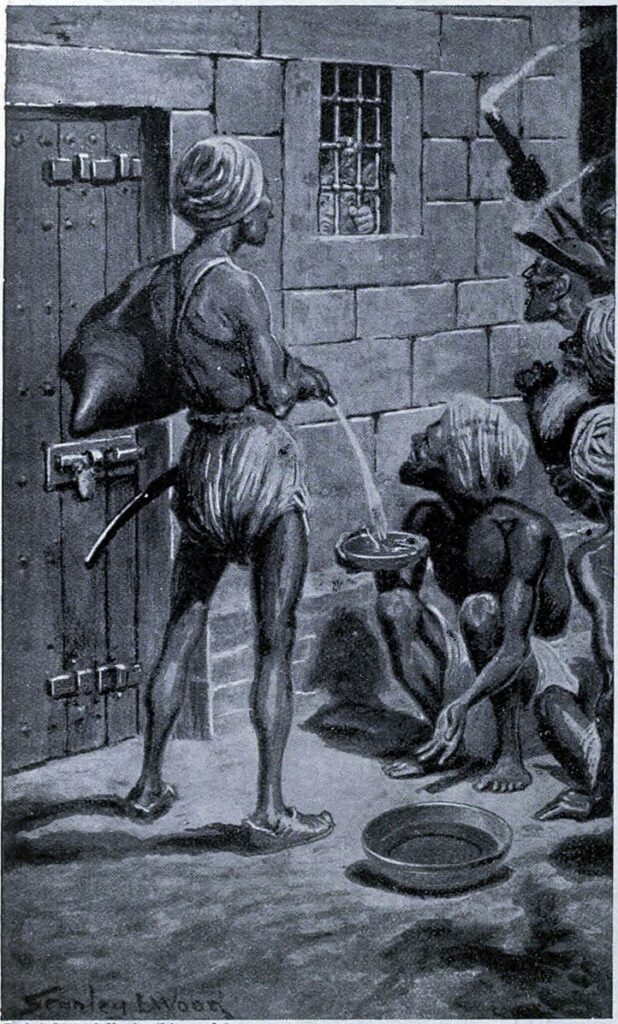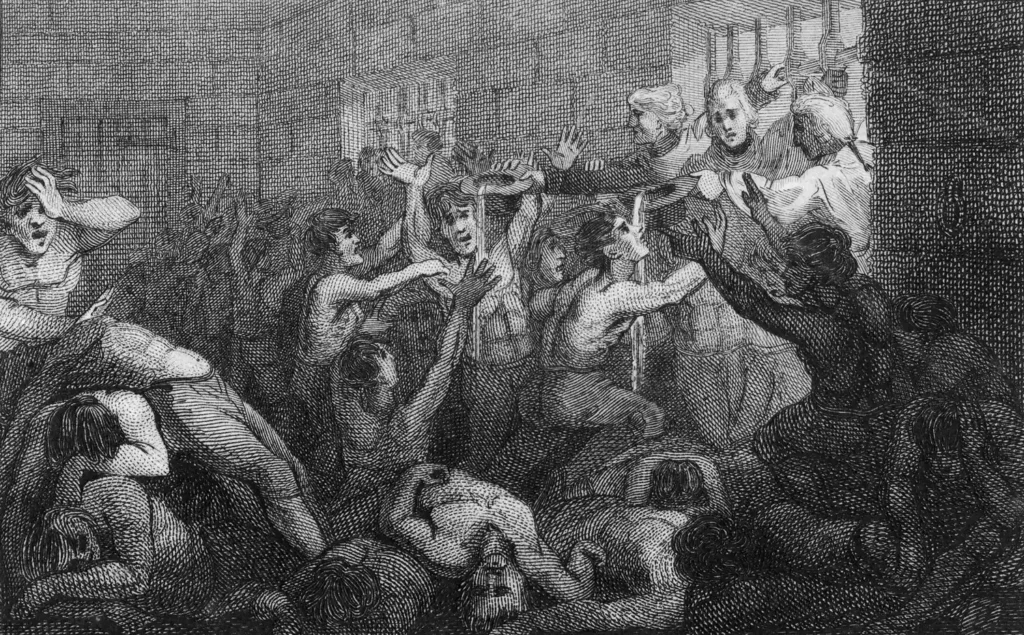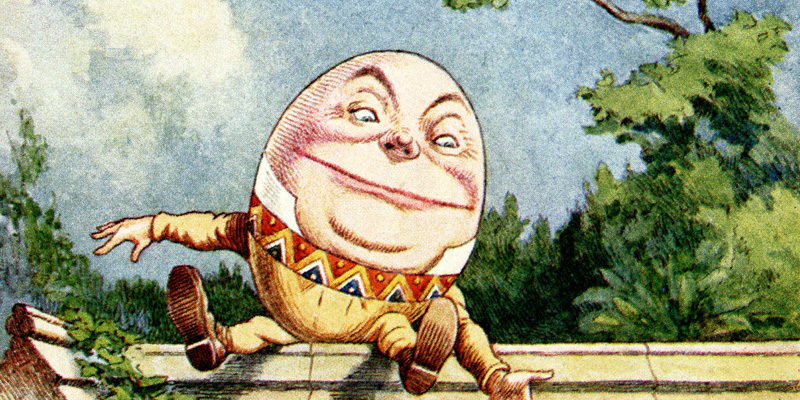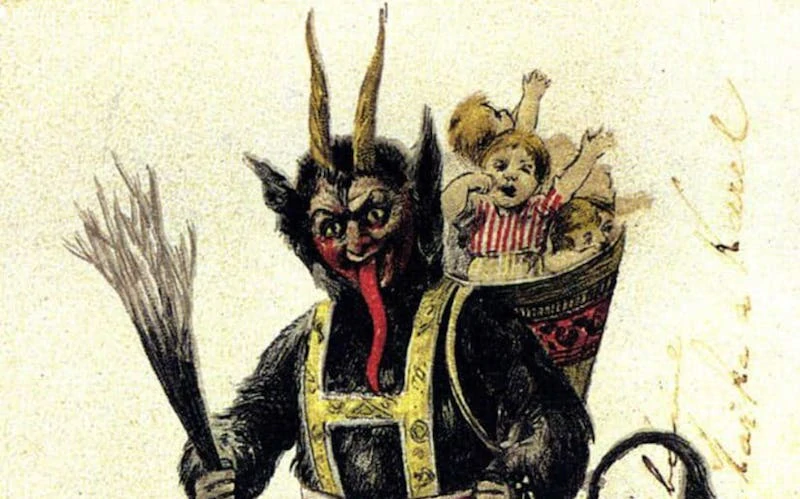The past is full of events that gained their notoriety from the death and destruction they wrought, but few of those events took place over a single night. In the city of Kolkata, then called Calcutta, one night was all it took to make a grisly mark in history, all thanks to their dungeon–the Black Hole of Calcutta.
On June 20, on a stifling summer night, over one hundred prisoners were placed in the dungeon. By the time morning came, some reports say that only 23 survived. Other sources, on the other hand, claim that the horror of the Black Hole of Calcutta incident has been blown out of proportion throughout history.
Here, we will delve into the events of that infamous night, the chaotic aftermath, and the controversies that surround it all. Was the Black Hole of Calcutta the living hell that legends make it out to be?

What is the Black Hole of Calcutta?
While the term “Black Hole of Calcutta” is usually used to describe the event in which British prisoners of war were jailed and suffered extreme casualties, the Black Hole itself was a dungeon.
To be more specific, the Black Hole of Calcutta was a dungeon within Fort William in the city of Calcutta, which is modern-day Kolkata. Fort William was a British East India Company stronghold that was taken over by Siraj-ud-Daulah, the Nawab of Bengal when the city fell.
This dungeon was described as small and incredibly confined, 18 feet by 14 feet in size, with two barred windows for light and air.
*The title “Nawab” is a royal title given to sovereign rulers, usually in South Asian states. The Western equivalent title would be “Prince”, so the Nawab of Bengal was essentially the Prince of Bengal.
What Happened in the Black Hole of Calcutta?
Prelude to the Battle of Calcutta
During the 1700s, the British East India Company was constantly looking for ways to expand. The EIC quickly took control of Calcutta, using the port city as a centralized point for trade in India.
The Bengal region of India was rich in resources, and the British East India Company wasn’t the only foreign company to take notice. The French East India Company was also present in the area, and to protect their assets, the British East India Company built Fort Williams.
To make tensions even higher, both the British and the French each had their own military forces attached to their stations in the Bengal region. The fear that a conflict might break out was upsetting to local Indian rulers.
Siraj ud-Daulah, the Nawab of Bengal, had grown tired of the foreign companies trying to control the region. He ordered that the fortification of Fort Williams be halted. As expected, the British East India Company did not comply.
To more firmly establish himself as the ruler of the area, and potentially to drive the British out, Siraj ud-Daulah gathered his army and attacked the fort.
The Fall of Fort Williams and the Black Hole of Calcutta
On June 20, 1756, the Nawab and his forces attacked Fort Williams. They were ready to drive out the British and take back the area for their own.
With Siraj ud-Daulah’s forces laying waste to Fort Williams, the British commander of the fort ordered his soldiers to escape. But not all of the British soldiers fled. Around 140 stayed behind under the watch of John Zephaniah Holwell.
The problem was that Holwell wasn’t a commander of any sort. In fact, he was a bureaucrat for the British East India Company who had once been a military surgeon. Along with the soldiers, an unrecorded number of Anglo-Indian merchants and civilians also took shelter in the fort.
Also present at Fort Williams was a group of Indian sepoys, or native Indian soldiers working for the British East India Company. When the Bengali forces began their siege, the sepoys deserted, leaving the British and Holwell in a lurch.
Now lacking the sepoy, and under the command of the civilian Holwell, Fort Williams quickly fell to Siraj ud-Daulah’s army. According to Holwell, Siraj ud-Daulah spoke with him before those at Fort Williams were imprisoned, and promised Holwell that no harm would come to them by his hand.
Siraj ud-Daulah needed to contain his new batch of prisoners, and Fort Williams lacked a large space to do so. With little other choice, Siraj ud-Daulah had all the prisoners rounded up and put into Fort William’s dungeon–also known as the Black Hole.
The Night of Hell: Inside the Black Hole of Calcutta
The prison, or the Black Hole of Calcutta, was perfectly acceptable for two or three prisoners, but the night of June 20 would see it filled with many, many more.
According to Holwells’s account, 146 people were placed into the Black Hole–the surviving soldiers from the siege along with the British and Anglo-English civilians that had taken shelter in the fort.
The cell was so full that it was difficult for the Bengali soldiers to shut the door.

Holwell’s description of the Black Hole of Calcutta described it as:
- 14 by 18 feet (4.3m x 5.5m)
- Having two windows with thick iron bars
- Containing a small, projecting veranda
The prisoners were locked inside around 8 pm, and from there, things became worse by the minute. The Black Hole was so tightly packed with bodies that the crush was suffocating.
Many of the prisoners were soon descending into shock. Within just an hour prisoners were dying, and one soldier on the veranda made a desperate plea to one of the Bengali guards.
This soldier offered the guard 1,000 rupees to have them moved to a larger holding area, and there was a brief moment of hope when the guard departed. Tragically, upon his return, he informed the soldier that Siraj ud-Daulah was sleeping. Without the Nawab’s permission, nothing could be done.
Chaos settled over the prisoners. They cried for help and begged for water to alleviate their thirst. Some guards tried to give the prisoners water, but the sheer number of bodies in the Black Hole made it impossible for everyone to get a drink.
Holwell and other prisoners who were lucky enough to get a sip were reduced to receiving the water in their hats before trying to pass it back to the others. Holwell would later recall the desperation of the men around him:
“While I was at this second window, I was observed by one of my miserable companions on the right of me, in the expedient of allaying my thirst by sucking my shirtsleeve.”
It wasn’t enough, and in the frantic panic among the prisoners, most of the water was spilled.
As the hours passed, more prisoners died. Those who weren’t suffocated in the crush would fall to the floor, exhausted, and be trampled to death. When they became delirious, there was a frantic push by some prisoners to reach the two small windows. Even more were crushed to death in the fray.
This misery lasted until 6 am when Siraj ud-Daulah finally awoke and ordered that the Black Hole be opened. Holwell, from whom we get this account, miraculously survived.
Of the 146 that Holwell claims were forced into the Black Hole of Calcutta, only 23 were said to have survived.
The Aftermath
Word of the suffering caused within the Black Hole of Calcutta reached the rest of the British East India Company. This spurred their military into action.
Lieutenant Colonel Robert Clive arrived on behalf of the company with five ships in tow. He met Siraj ud-Daulah and his army in battle, quickly retaking Fort William and Calcutta as a whole.
This battle would be known as the Battle of Plassey. Once Siraj ud-Daulah was defeated, he was taken prisoner and executed.
Who Caused the Black Hole of Calcutta?
It’s difficult to pinpoint a single person as the perpetrator of the Black Hole of Calcutta tragedy, but in the end, it was Siraj ud-Daulah, Nawab of Bengal, who gave the order to lock the prisoners away.
Siraj ud-Daulah’s complaint with the British East India Company wasn’t unfounded. The city of Calcutta had been taken over by the foreign company and out of the hands of the Indians, which was the issue the Nawab was trying to rectify.
That being said, the cruelty of what happened in the Black Hole was terrible enough that retaliation for the event was swift. This meant that Nawab may have sabotaged his own cause by locking prisoners away.

How Many People Survived the Black Hole of Calcutta?
If we believe Holwell’s account, 146 were locked away and 23 survived the night. However, some historians question Holwell’s account.
Deeper research has brought to light the potential that Holwell may have been an unreliable narrator and that his narrative of the event may have been dramatized.
The Controversy
The first person to question Holwell’s account was scholar J.H. Little in his article The Black Hole-The Question of Holwell’s Veracity. He argued that Holwell’s description of the incident was a “hoax”, and wildly exaggerated.
Following that, Indian scholar Brijen Gupta notes in The Black Hole Incident that Indian Historian Jadunath Sarkar believes that the Black Hole Incident did occur, but that Holwell’s numbers were blown out of proportion. Gupta writes,
“Indian scholars have recently come to accept Jadunath Sarkar’s opinion that probably not more than sixty were confined to the Black Hole.”
References
“Inside India #20: The truth about the Black Hole of Calcutta”- Vaseem Khan https://vaseemkhan.com/2021/05/02/inside-india-20-the-truth-about-the-black-hole-of-calcutta/
“The Black Hole Incident”- Brijen K. Gupta https://www.jstor.org/stable/2943449

